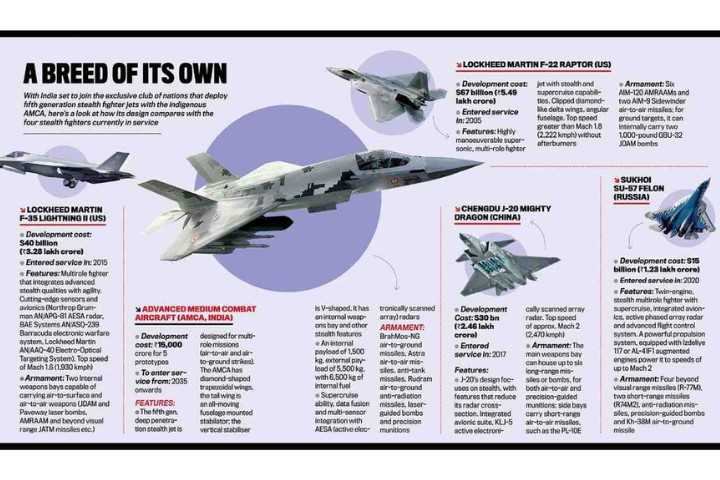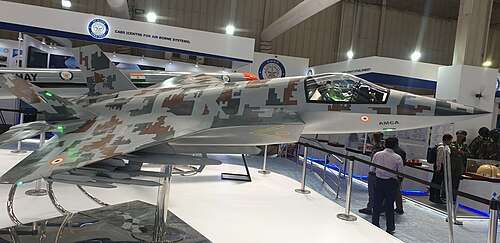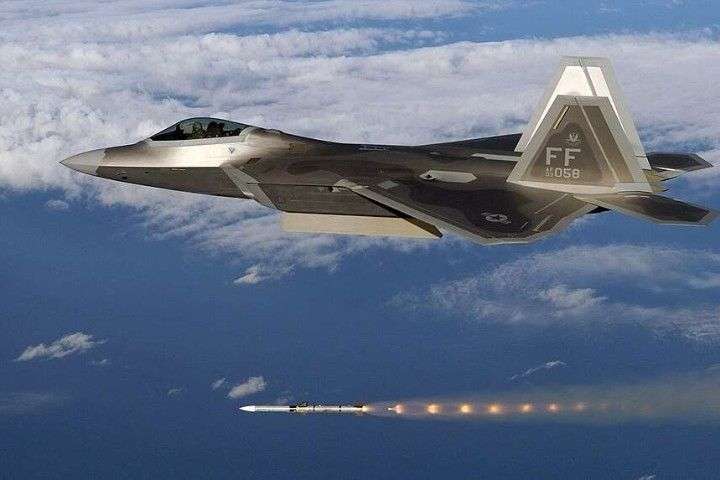The Advanced Medium Combat Aircraft (AMCA) being developed by India heralds a revolutionary landmark in achieving strategic autonomy in air power capability through indigenous technology development and self-reliance. The AMCA program is now officially approved for implementation and execution in 2024, as per the formal Defence Ministry’s approval. The AMCA program from a developmental perspective also makes it clear what India aims to develop, a true fifth-generation stealth fighter, built in an Indian context, for India’s unique defence priorities and geopolitical challenges.
Strategic Independence Via Indigenous Capability:
India’s Advanced Medium Combat Aircraft (AMCA) programs represent a significant move away from reliance on imported fighter jets and supports the government’s self-sufficiency model “Atma Nirbha Bharat” through the promotion and development of cutting-edge aerospace capabilities at home. By designing and developing core technologies like stealth, sensor fusion, digital avionics and super cruise domestically, India reduces dependence on foreign suppliers who limit or impose conditions or restrictions on technology transfer and operational sovereignty. The AMCA program requires an aerospace industrial ecosystem which includes the public sector undertakings, private industry, MSME’s, and new start-ups; thereby expanding the national defense industrial base. As a military asset, the AMCA conforms with and seeks to remediate Indian Air Force capability gaps, due to an aging fleet and shortfall of squadrons. The multirole, electronic warfare role into contested airspace, develop response capacity which allows India to counter evolving or growing threats primarily from China and Pakistan primarily in Himalayan and western sectors. A fully indigenous fifth-generation platform is capable of not only enhancing deterrence, but signaling India’s technological and operational equality, if more rarely superiority, in the order Indo-Pacific security environment.
A Phased and Collaborative Development Model:
The AMCA program employs a pragmatic two-phase development process. The Mark 1 variant will use some foreign-sourced modules to help accelerate the prototype validation process, and the Mark 2 will be completely indigenous (including avionics with AI enhancements and advanced weapons). The complex matter of developing an engine is being addressed, with India launching a joint venture with a foreign partner, to design and build next generation engines with the appropriate stealth, and thrust profiles, and allow manufacturers to recover from setbacks with projects like Kaveri. This cooperative model is a break from bureaucratic approaches to defense procurement and increases the odds of having a competitive or collaborative public-private partnership approach to procurement from the defense industry more broadly through SPVs (special purpose vehicles) jointly managed by HAL and private companies.

The Advanced Medium Combat Aircraft (AMCA), India’s indigenous fifth-generation stealth multirole fighter aircraft, is currently at the prototype development stage with the Aeronautical Development Agency (ADA) and DRDO. The project approved by the Cabinet Committee on Security, in March 2024, included a ₹15,000 crore budget for five prototypes. The AMCA will weigh 25-tonne, with twin-engine technology for air superiority, precision ground-strikes, suppression of enemy air defences (SEAD), and electronic warfare capabilities. The Mark1 will be powered by two GE414 (90kN) engines, while the Mark2 variant will be powered by a 110kN indigenous GTRE (Gas Turbine Research Establishment and Collaboration engine. The AMCA will reach a maximum speed of Match 2.15 with range of 1,620 km with weapons load and a ferrying range of 2,800 km. The AMCA will also feature advanced low-observable (stealth) technologies like radar-absorbing materials, serpentine intakes, infrared-reducing exhaust, and other classified technologies. The AMCA will be able to carry up to 6,500 kg of weapons which includes, internally, 1,500 kg of weapons load. The AMCA will feature AI-enabled avionics system and capabilities for Netcentric warfare capabilities, and Integrated Vehicle Health Management. The HAL (Hindustan Aeronautics Limited) will manufacture the AMCA aircraft. The first AMCA prototype should be available by 2025, thus production would start by 2033–34.
Global and Regional Effects:
Fifth-generation fighter aircraft are the most advanced class of fighters. The U.S. brought fifth-gen capability to an operational status with the first fifth-gen fighter, the F-22 Raptor in 2005, which has unmatched stealth and air supremacy. The U.S. introduced the F-35 Lightning II into service in 2015, including an enhanced avionics and data-sharing capabilities that enhance multirole options for the U.S. military and its allies with three different variants. China operationalized the Chengdu J-20 as its version of stealth capability, employed long-range stealth strike as a mission priority, integrating canard foreplanes into the design for improved agility, albeit at a possible cost to low observability. Russia brought the Su-57 into service in 2020, a fighter including thrust-vectoring engines as well as stealth features, although operating in radar evasion mode consumes propulsion power analogous to thrust-vectoring capabilities integrated into fighter engines. Concurrently, India is developing its own fifth generation platform, the AMCA , through highly necessary and vital program acquiring these platforms to bolster in its position as premier air power in the Indo-Pacific and more broadly and that the AMCA program is a vital strategic asset and that it helps develop India’s possible contribution to regional security cooperation (like the Quad).
India’s AMCA is set to step into the highly competitive fifth-generation fighter aircraft game, competing against serious world players such as the US F-35, China’s J-20, and Russia’s Su-57. Although India is doing it somewhat late, the AMCA’s indigenous stealth capability, AI-enhanced on-board avionics/sensors, and industry focus on network warfare allows India to counter existing platforms while providing utility to address regional security requirements. Additionally, with affordable development plans and the possibility of induction in a total of 11 years (by 2035), India is not only trying to reduce dependency on imported aircraft and equipment; it is trying to compete in the international space as a strategic player. The AMCA will ultimately play a role in improving India’s autonomy with respect air-power capabilities and the ability to demonstrate presence with evolving geopolitical pressure.


